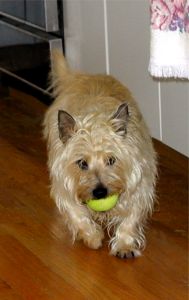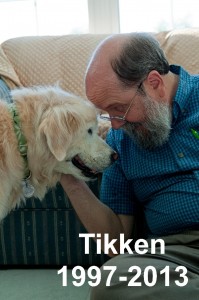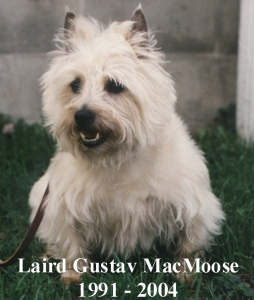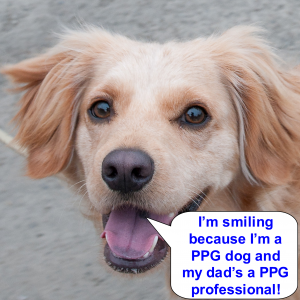< Updated 1 APR18 >
< A version of this article was published in the January 2016 issue of Downeast Dog News>
By Muppy Hanson, CUTE, ADORABLE, VIVACIOUS
Hi, everyone! My name is Muppy. Don asked me to write this month’s column because he thought I could provide some valuable insights. Plus he said if I did this for him I would get some extra tummy rubs and yummy treats!
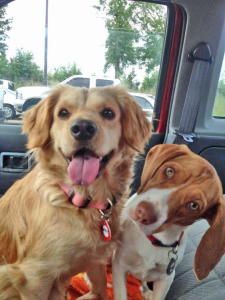 So what do I know about being a rescue dog? I am one, thanks to the kindness and compassion of several people in my birth state of Mississippi. I might not be here without them. I was living with a family, I had puppies, and then one day my people moved away and left, and my puppies and I were all alone. Fortunately, a nice lady named Catherine heard about me and rescued me by taking me to Rose, another nice lady. Rose fostered my puppies and me until we could be put up for adoption. I took good care of my pups until they were eight weeks old and then they were transported to New England to new homes. Soon after that, I was also sent to a rescue group in Maine, Helping Paws-Maine, where I was placed into a foster home until I was adopted. I got to ride to Maine with my friend Ernie who was also going up for adoption.
So what do I know about being a rescue dog? I am one, thanks to the kindness and compassion of several people in my birth state of Mississippi. I might not be here without them. I was living with a family, I had puppies, and then one day my people moved away and left, and my puppies and I were all alone. Fortunately, a nice lady named Catherine heard about me and rescued me by taking me to Rose, another nice lady. Rose fostered my puppies and me until we could be put up for adoption. I took good care of my pups until they were eight weeks old and then they were transported to New England to new homes. Soon after that, I was also sent to a rescue group in Maine, Helping Paws-Maine, where I was placed into a foster home until I was adopted. I got to ride to Maine with my friend Ernie who was also going up for adoption.
I did not know it, but Don and Paula were looking for a dog about the same time I was arriving in Maine. They found me on PetFinder, completed an application and made an appointment to meet me at my Maine foster home with another nice lady named Victoria.
When I first met Don and Paula in my foster home, they were sitting on a couch with Ernie. That boy is quite the social butterfly, unlike me at the time. When Don sat down next to me on the floor, I moved away because I was not so sure about him. However, once he started giving me some treats, I decided he was safe!
We all visited for a while, and then Paula and Don did some paperwork and then I got to go for a car ride to Bangor. It was May 1st, and I had a new home! When we arrived in Bangor, Don spent the rest of the day with me. We started off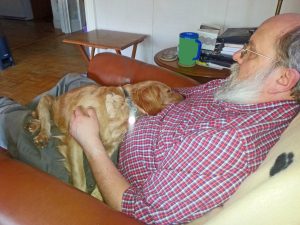
snuggling on the floor and then I took a nap in his lap while he was in his recliner. I got to explore the yard and that evening I again fell asleep in his lap.
The next morning started with Don taking me out to do my poops and then he sat down on the floor with my breakfast and started teaching me an attention behavior. All I had to do was look at him, and I’d get a piece of kibble. Yummy! I like this game! Over the next few days, I got to meet the staff at Don and Paula’s business, some of the dogs, my new veterinarian and the people at the bank.
Don told me that eventually I would get to go to school, but because I was a bit unsure of new things, especially people, he said he was going to let me settle in first. He hung a bag of treats on the door to his office along with a sign asking people coming in to grab a treat to give to me. Until then he worked with me on the attention behavior, recall and sit. He said I was a fast learner, and I loved how he rewarded me when I got it! He always makes training fun for both of us.
One of the things I started doing in my new home was to jump up on people I liked. I just get so excited when I see a person that I like, that I cannot help myself. I see them and POP! my front paws are on them, and I am smiling, hoping they will pet me and say “Hi.” Since I was shy, Don allowed me to do this as it was so rewarding to me. Since it was something I felt good about it helped me feel good about interacting with people. One day a strange man came to visit Don in his office, and I did not even think about being shy. I just ran up and jumped and said, “Hi! I am Muppy!” He patted and talked to me and was real nice. After that Don told me it looked like I was over my shyness and we would now start to work on sitting for greeting. I do pretty well, most of the time. There are some people that I like so much; I am talking about you Deb and Miriam, that I cannot always contain myself!
I started my first group training class at Green Acres on August 30th, 2013, four months after joining the Hanson family. Both Don and Paula went to class with me; Don says it is very important for all family members to be involved with training.
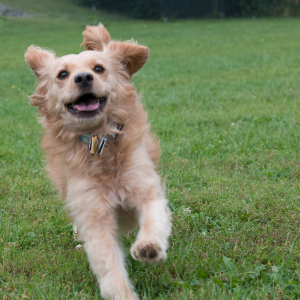 In that class I learned to do the following on cue; look, sit, lie down, walk nicely on a leash, come when called, leave it, and wait or stay. I have since taken Green Acres Level 2 and Level, 3 classes, as well; some more than once! I love training classes because it is so much fun! It is an opportunity for me to interact with my favorite people whether we are actually in class, or I am working individually with Don on the days in between class. Moreover, when I see Don out in the training field teaching classes filled with other people and dogs; I let him know I want to have fun too! That is why he keeps enrolling us in classes because it is so much fun for both of us.
In that class I learned to do the following on cue; look, sit, lie down, walk nicely on a leash, come when called, leave it, and wait or stay. I have since taken Green Acres Level 2 and Level, 3 classes, as well; some more than once! I love training classes because it is so much fun! It is an opportunity for me to interact with my favorite people whether we are actually in class, or I am working individually with Don on the days in between class. Moreover, when I see Don out in the training field teaching classes filled with other people and dogs; I let him know I want to have fun too! That is why he keeps enrolling us in classes because it is so much fun for both of us.
So I guess this is where I am supposed to tell you what I have learned. Every dog should be trained; training helps establish a bond and makes us better companions. It also makes it possible for us to go more places with you and to spend more time with you. Isn’t that why you got us in the first place, to be your steadfast companion? Work with a professional dog trainer either privately or in group classes as they can help you learn about your dog and make the process of training fun for both of you. Make sure any trainer you work with is committed to methods that are force-free, pain-free, and fear-free. The Pet Professionals Guild (http://www.petprofessionalguild.com/) can be a great resource for finding such a trainer. If you have a rescue dog like me, starting in a group class immediately might not be the best thing to do. A professional trainer can help you make that determination and can help you start working with your dog at home. Lastly, be patient with your dog and yourself and most importantly, ALWAYS make training fun!
*Photos by Debra Bell, Bell’s Furry Friends Photography
Recommended Resources
Articles on Don’s Blog ( http://www.words-woofs-meows.com )
How to choose a dog trainer – http://bit.ly/HowToChooseADogTrainer
Before You Go To The Dog Park – coming soon!
______________________________________________________________________________
Don Hanson is the co-owner of the Green Acres Kennel Shop (greenacreskennel.com) in Bangor. He is a Bach Foundation Registered Animal Practitioner (BFRAP), Certified Dog Behavior Consultant (CDBC), Associate Certified Cat Behavior Consultant (ACCBC) and a Certified Professional Dog Trainer (CPDT-KA). He produces and co- hosts a weekly radio show and podcast, The Woof Meow Show heard on The Pulse AM620 WZON and streamed at http://www.wzonradio.com/ every Saturday at 9 AM. A list of upcoming shows and podcasts of past shows can be found at www.woofmeowshow.com. Don also writes about pets at his blog: www.words-woofs-meows.com.
©2018, Donald J. Hanson, All Rights Reserved <Click for Copyright and Use Policy>

